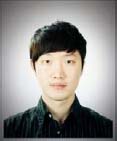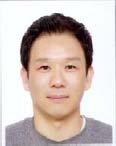|
|
|
| |
| ABSTRACT |
|
The purpose of this study was to investigate address position variables in response to changes in ball position in golfers. Eleven male professional golfers were instructed to perform their golf swing. A three-dimensional motion analysis system, with eight infrared cameras and two force platforms, was used to capture the address positions. A golf ball has a diameter of 4.27 cm, and a radius of 2.14 cm. Even small movements of ball position in the mediolateral (M-L) and anteroposterior (A-P) directions significantly changed the address position. When the ball was moved to the left, the shoulder rotation and club-face aim rotated toward the left of the target, and the left vertical ground reaction force increased. When the ball was moved to the right, the opposite findings were observed. When the ball was moved closer, the trunk, hip, knee, ankle, and absolute arm angle extended; the lie angle of the golf club increased; and the center of pressure moved toward the posterior direction. These changes were reversed when the ball was moved further away. The M-L ball position critically changed the address positions of the upper extremities in the horizontal plane, and the A-P ball position critically changed the angles of whole body parts in the sagittal plane. Furthermore, club-head kinematics at impact such as club-face aim, club path, and angle of attack were significantly changed in the M-L ball position; and club-head speed and angle of attack were significantly changed in the A-P ball position. This in-depth understanding of the address position in association with the ball position could provide valuable data for swing coaches when finding a golfer’s optimal address position. |
| Key words:
Alignment, club-face aim, kinematics, kinetic, lie angle
|
Key
Points
- If the ball was moved to the left, shoulder rotation and the club-face aim aligned toward the left of the target, and the left VGRF increased. Conversely, if the ball was moved to the right, opposite results occurred.
- If the ball was moved closer, the hand position became higher as the lie angle increased, and T-H-K-A extended. Additionally, the absolute arm angle moved closer to the body, and the COP moved to the posterior direction. Conversely, if the ball was moved further away, the changes were reversed.
- Our findings could provide valuable data for swing coaches when they are working on finding optimal address position with golfers.
|
In golf, the address position is a term broadly used to describe the position the body adopts to hit the ball (Zhang and Shan, 2014). The kinematics and kinetics of the address positions of elite golfers have been highlighted as important areas to study for improving swing skills (Okuda et al., 2010; Wrobel et al., 2012; Zheng et al., 2008a). Ball position is among the various constituent elements of the address position that have been investigated in previous studies. They found that the ball position can lead to changes in the distance, direction, and trajectory of ball flight (Chen et al., 2007; Bradshaw et al., 2009; Zhang and Shan, 2014). Chen et al. (2007) found that the optimum ball position along the mediolateral direction increases club-head velocity at impact. Zhang and Shan (2014) found that variability in the ball position along the mediolateral direction directly influences the execution of a consistent golf swing, and that a variation of ±0.6 cm in the ball position could translate into a variation of ±3° in the vertical ball launch angle. Thus, minor changes in the ball position can lead to changes in the distance, direction, and trajectory of the ball flight. However, these previous studies on ball position provide a limited biomechanical explanation regarding the relationship between ball position and ball flight. One possible interpretation is that the angle of the body joints in the address position changes to adapt to the different ball position; therefore, the change in the address position can influence the golf swing, which will ultimately affect the ball flight (Smith et al., 2012). However, it is unclear whether the address position is affected by a change in the ball position. Many swing coaches also emphasize the importance of finding the optimal address position in their instructions for maximum performance, and focus on the ball position for a well-balanced address position (Cochran and Stobbs, 1968; Dusek, 2006; Hogan, 1957; Leadbetter, 1990; 1993; Murphy, 2011; Nicklaus, 2005; Peper and Frank, 1997; Watson, 2011; Wiren, 1990; Woods, 2001). If so, an in-depth evaluation of the address position in association with the ball position could provide valuable data for swing coaches. There are relatively little published data on the address position. Most studies have included the address position as part of the golf swing, and therefore, few address position variables have been examined. Zheng et al. (2008b) quantified trunk orientation at the address position using a three-dimensional (3D) motion analysis system. They found that female professional golfers have 3° less trunk flexion than male professional golfers. Although previous studies have focused on the kinematics of trunk flexion, future work should explore the joint kinematics of the lower body, kinematics of the upper extremities, orientation of the golf club, vertical ground reaction force (VGRF), and center of pressure (COP), to have an in-depth understanding of the address position. This study aimed to examine address position variables with respect to changes in the ball position along the mediolateral (M-L) and anteroposterior (A-P) directions. We hypothesized that there is a significant difference in address position variables in response to a change in the ball position along the M-L and A-P directions. Such variables include the kinematics of trunk flexion, joint kinematics of the lower body, kinematics of the upper extremities, orientation of the golf club, VGRF, and COP. ParticipantsEleven right-handed male professional golfers from the Korea Professional Golfers’ Association (mean ± standard deviation: age 27.82 ± 3.87 years, height 1.78 ± 0.07 m, mass 75.23 ± 8.54 kg) volunteered to participate in this study. G*power was used to assess the number of participants required for this study (β = 0.15 and α = 0.05). The participants had no history or complaints of chronic pain, major injuries, or had undergone surgery in the preceding 6 months. The study protocol was approved by the institutional review board, and all participants provided informed consent.
InstrumentationTesting was performed in an indoor facility, using a motion analysis system with eight infrared cameras (Vicon MX-F20, Oxford, UK, 250 Hz) and two force platforms (OR6-7; AMTI, Watertown, MA, USA; 2000 Hz) to capture the address positions. Participants hit golf balls off an artificial turf surface into a net located 5 meters in front of the contact position. This experimental setting of the net position was intended to reduce bias in respect of the address position change due to the ball flight feedback. A target line with a diameter of 30 cm was attached to the center of the net; participants aimed at the target line.
ProceduresEach participant wore a fitted indoor outfit and the same shoe type to ensure data accuracy. The necessary anthropometric information was obtained and entered into the motion analysis system. Anthropometric measurements of the lower extremities were taken, including body mass and height, leg length, knee width, and ankle width. Anthropometric measurements of the upper extremities included shoulder offset (the vertical distance from the center of the glenohumeral joint to the marker on the acromion-clavicular joint), elbow width, wrist width, and hand thickness. Thirty-five reflective markers (diameter 14 mm) were placed on anatomical landmarks based on the Vicon® Plug-in-Gait model: left front head, right front head, left back head, right back head, 7th cervical vertebrae, 10th thoracic vertebrae, jugular notch, xiphoid process, right scapula, acromion-clavicular joint (left/right), lateral epicondyle (elbow, left/right), radial side of the wrist bar (left/right), ulnar side of the wrist bar (left/right), hand (just below the head of the second metacarpal, left/right), left anterior superior iliac spine, right anterior superior iliac spine, left posterior superior iliac spine, right posterior superior iliac spine, lateral thigh (left/right), lateral epicondyle (knee, left/right), lateral malleolus (left/right), lateral tibia (left/right), second metatarsal head of the foot (left/right), and calcaneus (left/right). Additionally, three markers were attached to a five-iron club head to identify the club-face aim, loft angle, and the phase of the address. Two markers were attached to a club shaft to identify the lie angle. Reflective adhesive tape was to a golf ball (Figure 1). The participants completed a self-selected warm-up for a minimum of 10 minutes that involved several golf shots. After the warm-up, the participants were asked to assume their preferred address position with the golf ball, and the positions of each foot were outlined by attaching tape to the force plate in the form of a cross over the toe and the heel (Figure 1). To find an accurate reference ball position, the participants were asked to assume their address position five times while the foot position was fixed to the outline, and participants were then able to move the ball position. We calculated the mean ball position using the positional data of the golf ball from the five trials. The positional data of the golf ball was calculated from the origin of the global coordinate system, which was located at the edge of the force plate that the right foot was located on. The LPGA Teaching Manual (2000) states that the correct ball position is different for each golfer. Thus, in this study, the reference ball position was determined as the preferred ball position of each participant. Additionally, if the same reference ball position was used, different levels of discomfort bias could have occurred among the participants. The M-L ball position testing conditions were the length of one golf ball (4.27 cm) to the left, half of a golf ball (2.14 cm) to the left, half of a golf ball to the right, and one golf ball to the right of the reference ball position (from the player’s viewpoint). Furthermore, the A-P ball position testing conditions were one golf ball closer, half of golf ball closer, half of golf ball further away, and one golf ball further away from the reference ball position (Figure 2). The participants were asked to perform a full golf swing for each ball position at the outlined foot positions. Executing a golf swing instead of just adopting the address position could provide more realistic data on the effects of the ball position. Zheng et al. (2008b) averaged the best two out of ten trials, and Okuda et al. (2010) asked participants to perform five trials and averaged them. Our testing was completed once the participant successfully hit five trials, which were then averaged. After participants completed five trials in one ball position, we asked participants to leave the experiment room during the changing of the ball position, and we randomized for the nine different ball positions. We ensured participants kept their feet in the taped cross for each trial. Our independent variables were measured at nine different ball positions in five trials that comprised a total of 45 trials. During all the golf swing trials, the positions of the raw markers and force plate data were collected.
Data analysisThe coordinates X, Y, and Z in the global coordinate system were defined as the A-P, M-L, and vertical axes, respectively. The 3D coordinate data were smoothed using the Woltring filtering routine, with a mean square error of 10 mm2 (Woltring, 1986). The filtered 3D coordinates were then processed to calculate the address variables using a custom-written program in LabVIEW (2016; National Instruments, Austin, TX, USA). The address position was identified as the frame before the club moves away from the ball. Shoulder rotation was defined as the horizontal rotation angle of the shoulder in the global horizontal plane, in which the shoulder is identified between the right and left shoulder markers (negative for aligning left of the parallel line of the target; 0° for the global Y-axis, which is the parallel line of the target) (Figure 3a). Pelvic rotation was defined as the horizontal rotation angle of the pelvis in the global horizontal plane, in which the pelvis is identified between the right and left anterior superior iliac spine markers (negative for aligning left of the parallel line of the target, 0° for the global Y-axis) (Figure 3b). Shoulder side-bending was defined as the side-bending angle of the shoulder in the global frontal plane, in which the shoulder is identified between the right and left shoulder markers (negative for bending toward the trailing side, 0° for the global Y-axis) (Figure 3c). Pelvic side-bending was defined as the side-bending angle of the pelvis in the global frontal plane, in which the pelvis is identified between the right and left anterior superior iliac spine markers (negative for bending toward the trailing side, 0° for the global Y-axis) (Figure 3d). Trunk flexion was defined as the flexion angle of the trunk in the global sagittal plane, in which the segment is identified between the 7th cervical vertebrae marker to the center of the right posterior superior iliac spine and the left posterior superior iliac spine markers (positive for flexion, 0° for the global Z-axis) (Figure 3e). Hip flexion was defined as the angle between the pelvis and thigh (Figure 3f). Knee flexion was defined as the angle between the thigh and shin (Figure 3g). The hip and knee flexion angles were 0° at full extension. Ankle dorsiflexion was 0° at 90° from the foot (positive for flexion) (Figure 3h). Hand height was the defined as the vertical length between the hand and the ground, in which the hand was identified as the center of the left hand and right hand markers (Figure 3i). Head height was the defined as the vertical length between the head and the ground, in which the head was identified as the center of the left front head, right front head, left back head, and right back head markers (Figure 3j). Absolute arm angle was the defined as the shoulder flexion angle in the global sagittal plane, in which the segment is identified between the center of the left shoulder and right shoulder markers to the center of the left hand and right hand markers (positive for flexion, 0° for the global Z-axis (Figure 3k). Club-face aim was defined as the global horizontal rotation angle of the club face in the horizontal plane, in which the club face was identified between the toe and heel markers on the club head (negative for aiming left of the target, 0° for the global Y-axis) (Figure 3l). The lie angle was defined as the shaft angle relative to the ground in the global sagittal plane (Figure 3m). The loft angle was defined as the frontal rotation angle of the toe of the club head in the global frontal plane, in which the toe of the club head was identified between the two markers on the toe of the club head (positive for adding loft angle, 0° for the global Z-axis) (Figure 3n). VGRF was defined as the percentage of the total ground reaction force with respect to the body weight (Figure 3o). COP X and COP Y were defined as the change of the COP along the A-P and M-L directions, respectively (Ball and Best, 2007) (positive for the anterior and lateral direction, 0 mm for values at the reference ball position) (Figure 3p). We also quantified club-head kinematics at impact such as club-face aim, club-head speed, club path, and angle of attack. Club-head speed was derived from the resultant velocity of the club head, and both the vertical and lateral velocity vectors were calculated and used to represent the club path (positive for in-out club path, 0° for the global Y-axis) and angle of attack (negative for downward angle of attack) (Sweeney et al., 2013).
Statistical analysisThe mean and standard deviation for each dependent variable were calculated for the nine different ball positions. For each participant, all dependent variables were based on the average of five participants’ trials. To examine the differences in the address position for the M-L and A-P ball positions, we used five-level ball positions for each direction. We conducted one-way analyses of variance with repeated measures (PASW Statistics 18.0; SPSS Inc., Chicago, IL, USA), followed by Bonferroni post-hoc tests. A P value of <0.05 was considered significant. We performed repeated measurements on each of the 21 address position dependent variables and four club motion dependent variables at impact position, between five-level ball positions in each direction (M-L and A-P); repeated measurements were performed a total of 50 times.
Mediolateral ball positionsOf the 21 address position variables collected, eight had a significant difference in the M-L ball positions (Table 1). Shoulder rotation, shoulder side-bending, left VGRF, right VGRF, and club-face aim were significantly changed in M-L ball position (all p < 0.001); there was a typical trend that when the ball was moved to the left of the reference ball position, shoulder rotation and club-face aim rotated toward the left of the target (which is called “open shoulder” and “closed club-face” in golf instruction), shoulder side-bending toward the trailing side increased, left VGRF increased, and right VGRF decreased. When the ball was moved to the right, the typical trend was the reverse; shoulder rotation and club-face aim rotated toward the right of the target (which is called “closed shoulder” and “open club-face” in golf instruction), shoulder side-bending toward the trailing side decreased, left VGRF decreased, and right VGRF increased. Besides these results, the absolute arm angle, hand height, and the lie angle were also significantly changed in the M-L ball position but only showed minor level of change (max output – min output: 0.6°, 3.9 mm, and 0.4°, respectively), and there was a zigzag trend. Furthermore, club-face aim, club path, and angle of attack at impact were significantly changed in the M-L ball position (p = 0.002, p < 0.001, and p = 0.003, respectively); the typical trend was that when the ball was moved to the left, the club path became toward the out-in club path and the downward angle of attack reduced. When the ball was moved to the right, the typical trend was the reverse; club path became more in-out club path and the downward angle of attack increased; furthermore, the club-face aim rotated toward the right of the target.
Anteroposterior ball positionsOf the 21 address position variables collected, 14 showed a significant difference in the A-P ball positions (Table 2). Trunk flexion, left and right hip flexion, left and right knee flexion, and left and right ankle dorsiflexion (T-H-K-A) were significantly changed in A-P ball positions (all p < 0.001, except left hip flexion p = 0.02); there was a typical trend that when the ball was moved closer to the reference ball position, T-H-K-A extended, COP X moved in the posterior direction, absolute arm angle moved closer to the body, hand height and head height increased, and the lie angle increased. When the ball was moved further away, the typical trend was reversed; T-H-K-A flexed more, COP X moved in the anterior direction, absolute arm angel moved further from the body, hand height and head height decreased, and the lie angle decreased. In addition, the left VGRF and right VGRF were also significantly changed in the A-P ball position, but only showed minor level of change (max output – min output: 1.2 and 1.2% BW, respectively), and there was a zigzag trend. Furthermore, significant differences were only observed between the one closer and 1/2 further. Furthermore, club-head speed and angle of attack at impact were significantly changed in the A-P ball position (p = 0.003 and p = 0.02, respectively). The typical trend was that when the ball was moved closer, the club-head speed decreased; when the ball was moved further away, the club-head speed increased, and downward angle of attack reduced.
This study aimed to examine the address position variables with respect to changes in the ball position along the M-L and A-P directions. As hypothesized, there were significant differences in the address position variables for different ball positions along the M-L and A-P directions. Mediolateral ball positionsIn M-L ball position, several variables of the address position show significant differences and there is a typical trend (Figure 4). One is shoulder rotation (Figure 4a). This typical trend of shoulder rotation (which is called “shoulder alignment” in golf instruction) in the M-L ball position can explain errors in the shoulder alignment and may influence the direction of the ball flight. Teaching professionals often seek to orient alignment of the shoulder parallel to the line of the target at the address position (Dusek, 2006; Peper and Frank, 1997; Wiren, 1990). However, a previous study found that even when golfers did the proper shoulder alignment procedure, errors in shoulder alignment still occurred (Martino, 1990). This error may arise from an inconsistent ball position in the M-L direction. This typical trend of shoulder alignment may also influence the direction of the ball flight because the shoulder alignment may influence the club path (Martino, 1990), and the club path determines the direction of the ball flight (Sweeney et al., 2013); furthermore, our result also shows significant differences in club path with M-L ball position. Another address position variable that showed a significant difference with a typical trend in the M-L ball position is shoulder side-bending (Figure 4b), which could be a result of shoulder rotation because the 3D plane of shoulder rotation is tilted to the same extent as the trunk flexion (Figure 5). If the 3D plane of shoulder rotation rotates at a trunk flexion of 45°, shoulder side-bending in the two-dimensional (2D) plane (YZ plane) and shoulder rotation in the 2D plane (XY plane) will rotate at the same angle. Furthermore, we can also speculate that if shoulder rotation rotates with a trunk flexion of less than 45°, shoulder side-bending in the 2D plane will rotate at a smaller angle than shoulder rotation in the 2D plane. For this experiment, we used the 2D plane method to analyze the shoulder side-bending and the shoulder rotation. Our results indicated that a trunk flexion of 41.5° (trunk flexion at the reference ball position), the change in the shoulder rotation is 1.8° (shoulder rotation difference between 1 left and 1 right ball position), and change in the shoulder side-bending is 1.5° (shoulder side-bending difference between 1 left and 1 right ball position). Thus, we had a trunk flexion angle of less than 45°, resulting in shoulder side-bending at a smaller angle than the shoulder rotation. This suggests that our result of a typical trend in shoulder side-bending could be a result of the 3D plane of shoulder rotation. Furthermore, this change of shoulder side-bending could influence the angle of attack at impact. A third address position variable that showed a significant difference with a typical trend in the M-L ball position is the club-face aim (Figure 4c). This typical trend is similar to that of shoulder rotation (Figure 4a), which might be explicable biomechanically as a relationship between the M-L ball positions and the direction of the ball flight. Our result of the club-face aim at impact also showed that when the ball was moved to the right, the club-face aim rotated toward the right side of the target. A fourth address position variable that showed a significant difference with a typical trend in the M-L ball position is the VGRF (Figure 4d; only shows left VGRF but right VGRF also has a typical trend but reversed). This typical trend of the VGRF may be explained by the club loft angle, which showed almost no change in the M-L ball position (1 left vs. 1/2 left vs. ref. vs. 1/2 right vs. 1 right: 18.5° ± 2.8 vs. 18.2° ± 2.8 vs. 18.6° ± 3.4 vs. 18.5° ± 3.0 vs. 18.6° ± 2.7, respectively), as rotation of the shoulder toward the same direction as the ball movement to maintain the club loft angle may have ultimately influenced the VGRF. In addition, absolute arm angle, hand height, and lie angle also show significant but minor differences in the M-L ball position (max output – min output: 0.6°, 3.9 mm, and 0.4°, respectively) with a zigzag trend. We believe that these results are probably not important findings as this minor level of change could just be a result of the change in shoulder rotation. In summary for the M-L ball positions, if the ball was moved to the left, the unchanged club loft angle may create shoulder rotation and club-face aim alignment to the left of the target, which may increase the left VGRF. In addition, shoulder side-bending changes could be the result of shoulder rotation due to the angle of trunk flexion. Conversely, if the ball was moved to the right, the opposite results occurred. Moreover, this changes of the address position could cause significant differences in club-head kinematics at impact, such as club-face aim, club path, and angle of attack.
Anteroposterior ball positionsIn the A-P ball position, many variables of the address position also show a significant difference with a typical trend (Figure 6). One is the T-H-K-A (Figure 6a-d), which is body angle changes in the sagittal plane. Other variables of the significantly changed address position include the hand and head height (Table 2), and the lie angle (Figure 6e) have a critical relationship in the A-P ball position (Figure 7). The length of the club shaft (C) remains constant. Therefore, when the ball was moved closer (b < b`), the hand position became higher as the lie angle increased (a > a`). The higher hand position then caused the T-H-K-A to extend and the head position to go higher. Conversely, when the ball was moved further away (b < b`), the hand position got lower as the lie angle decreased (a > a`). The lower hand position then caused the T-H-K-A to flex more and the head position to go lower. In addition, we considered whether there was any other movement of the hand position other than vertically. We quantified the absolute arm angle in the sagittal plane to check any other movement in the hand position (Table 2). We found that when the ball was moved closer, the absolute arm angle moved closer to the body, and when the ball was moved further away, the arms dropped naturally in a vertical line (d and d` in Figure 7). Our results concerning the absolute arm angle in the A-P direction can be practically used to improve the arm position in the address position. Adlington (1996) suggested that the arm should naturally drop from the shoulder at the address position. However, our results showed that the furthest away ball position (one ball further away from the reference ball position) was the closest for obtaining a zero degree/straight drop outcome. Furthermore, when the absolute arm angle moved closer to the body, it may generate a COP X toward the posterior direction (Figure 6f). Furthermore, the club-head kinematics at impact, club-head speed, and angle of attack changed significantly in the A-P ball position. Future research including in-swing variables is suggested to explain this change of the club-head speed and angle of attack in the A-P ball position. In summary for the A-P ball positions, when the ball was moved closer, the hand position became higher as the lie angle increased. The higher hand position then caused T-H-K-A extension and a higher head position. Furthermore, when the ball was moved closer, the absolute arm angle moved closer to the body and this closer arm angle may generate a COP X toward the posterior direction. Conversely, if the ball was moved further away, the opposite results occurred. The amount of vertical hand positioning can be reduced through A-P movement of the hand position. Therefore, the two-way movement of the hand position (vertical and A-P) may reduce the change in the body angle and minimize the change of COP.
Previous research on the ball position offers a limited biomechanical explanation for understanding the relationship between the ball position and ball flight. Our results suggest possibilities that can offer a biomechanical explanation. In this study, we found that the address position was affected by the movement of the ball position in the M-L direction and A-P direction. Movement in the M-L direction: shoulder rotation and club-face aim rotated in the same direction as that of the ball and the VGRF in that same direction increased. Movement in the A-P direction: when the ball was moved closer, the T-H-K-A extended, the COP X moved toward the posterior direction, and the lie angle increased. These changes were reversed when the ball was moved further away. Therefore, the M-L ball position critically changed the address position of the upper extremities in the horizontal plane, and the A-P ball position critically changed the angle of whole body parts in the sagittal plane. The amount of ball position movement involved only 2.14-cm and 4.27-cm changes. Therefore, the many significantly changed variables of the address position with respect to this little movement of the ball position can be a meaningful result. Furthermore, this in-depth understanding of the address position in association with the ball position could provide valuable data for swing coaches when finding the optimal address position for golfers. For example, if a golfer seems to have too much weight on their heel, we can suggest them move the ball position further, thus, the weight will naturally move towards their toe without artificial movement.
| ACKNOWLEDGEMENTS |
This research did not receive any specific grant from funding agencies in the public, commercial, or not-for-profit sectors. The authors have no conflicts of interest to declare. All experiments were performed adhering to the ethical standards and current laws of the country.All procedures performed in this study were in accordance with the ethical standards of the Yonsei University (IRB#1040917-201601-SB-104-02) committee and with the 1964 Helsinki declaration and its later amendments or comparable ethical standards. |
|
| AUTHOR BIOGRAPHY |
|
 |
Sung Eun Kim |
| Employment: Lecturer in the Department of Physical Education at Yonsei University, Korea |
| Degree: PhD, LPGA |
| Research interests: Golf swing biomechanics. |
| E-mail: sungeun.kim@yonsei.ac.kr |
| |
 |
Young-Chul Koh |
| Employment: Department of Physical Education at Yonsei University, Korea |
| Degree: PhD |
| Research interests: Sports biomechanics, motion analysis |
| E-mail: kohyoungchul@gmail.com |
| |
 |
Joon-Haeng Cho |
| Employment: Assistant Professor in the Department of Liberal Arts and Science at Hansung University, Korea |
| Degree: PhD |
| Research interests: Sports medicine |
| E-mail: jhcho@hansung.ac.kr |
| |
 |
Sae Yong Lee |
| Employment: Associate Professor in the Department of Physical Education at Yonsei University, Korea |
| Degree: PhD, ATC |
| Research interests: Sports medicine |
| E-mail: sylee1@yonsei.ac.kr |
| |
 |
Hae-Dong Lee |
| Employment: Professor in the Department of Physical Education at Yonsei University, Korea |
| Degree: PhD |
| Research interests: Muscle mechanics |
| E-mail: xbridge1997@yonsei.ac.kr |
| |
 |
Sung-Cheol Lee |
| Employment: Professor in the Department of Physical Education at Yonsei University, Korea |
| Degree: PhD |
| Research interests: Sports biomechanics, motion analysis |
| E-mail: cheol3192@yonsei.ac.kr |
| |
|
| |
| REFERENCES |
 Adlington G. (1996) Proper swing technique and biomechanics of golf. Clinics in Sports Medicine 15, 9-26. |
 Ball K.A., Best R. (2007) Different centre of pressure patterns within the golf stroke II: Group-based analysis. Journal of Sports Sciences 25, 771-779. |
 Bradshaw E.J., Keogh J.W., Hume P.A., Maulder P.S., Nortje J., Marnewick M. (2009) The effect of biological movement variability on the performance of the golf swing in high- and low-handicapped players. Research Quarterly for Exercise and Sport 80, 185-196. |
 Chen C., Inoue Y., Shibara K. (2007) Numerical study on the wrist action during the golf downswing. Sports Engineering 10, 23-31. |
 Chu Y., Sell T., Lephart S. (2010) The relationship between biomechanical variables and driving performance during the golf swing. Journal of Sports Sciences 28, 1251-1259. |
 Cochran, A. J. (Alastair J.) and Stobbs, J. (1968) The search for the perfect
swing. London: Heinemann. |
 Dusek, D. (2006) Golf Mag. private lessons. New York: Harry N Abrams
Inc. |
 Hogan, B. (1957) Ben Hogan's Five Lessons: The modern fundamentals
of golf. New York: Barnes. |
 Ladies Professional Golf Association (LPGA) (2000) LPGA National Education
Program Series Instruction Manual. Daytona Beach,
Florida: Ladies Professional Golf Association. |
 Leadbetter, D. (1990) The Golf Swing. London: Collins Willow. |
 Leadbetter, D. (1993) David Leadbetter's Faults and Fixes. New York:
Harper Collins Publishers Inc. |
 Martino P. (1990) Target misalignment: the role of strategies versus visual
bias on aiming accuracy. Paper presented at: Science and Golf I:
Proceedings of the World Scientific Congress of Golf, St.
Andrews-Scotland., July 9-13. |
 Murphy J. (2011) Build confidence at address. Golf Magazine 53, 68. |
 Nicklaus, J. (2005) Golf my way. The instructional classic revised and
updated. New York: Simon & Schuster Paperbacks. |
 Okuda I., Gribble P., Armstrong C. (2010) Trunk rotation and weight transfer patterns between skilled and low skilled golfers. Journal of Sports Science and Medicine 9, 127-133. |
 Peper, G. and Frank, J.A. (1997) Golf Instruction. Golf Mag. New York:
Harry N Abrams Inc. |
 Smith A., Roberts J., Wallace E., Forrester S. (2012) Professional golf coaches’ perceptions of the key technical parameters in the golf swing. Procedia Engineering 34, 224-229. |
 Smith A., Roberts J., Wallace E., Kong P., Forrester S. (2016) Comparison of Two-and Three-Dimensional Methods for Analysis of Trunk Kinematic Variables in the Golf Swing. Journal of Applied Biomechanics 32, 23. |
 Sweeney M., Mills P., Alderson J., Elliot B. (2013) The influence of club-head kinematics on early ball flight characteristics in the golf drive. Sports Biomechanics 12, 247-258. |
 Watson, T. (2011) The Timeless Swing. New York: Atria Books. |
 Wiren, G. (1990) PGA teaching Manual: The art and science of golf
instruction. Palm Beach Gardens: PGA of America. |
 Woltring H.J. (1986) A FORTRAN package for generalized, cross-validatory spline smoothing and differentiation. Advances in Engineering Software 8, 104-113. |
 Woods, T. (2001) How I play golf. New York: Grand Central Publishing. |
 Wrobel J.S., Marclay S., Najafi B. (2012) Golfing skill level postural control differences: a brief report. Journal of Sports Science and Medicine 11, 452-458. |
 Zhang X., Shan G. (2014) Where do golf driver swings go wrong? Factors influencing driver swing consistency. Scandinavian Journal of Medicine & Science in Sports 24, 749-757. |
 Zheng N., Barrentine S., Fleisig G., Andrews J. (2008a) Kinematic analysis of swing in pro and amateur golfers. International Journal of Sports Medicine 29, 487-493. |
 Zheng N., Barrentine S., Fleisig G., Andrews J. (2008b) Swing kinematics for male and female pro golfers. International Journal of Sports Medicine 29, 965-970. |
|
| |
|
|
|
|

